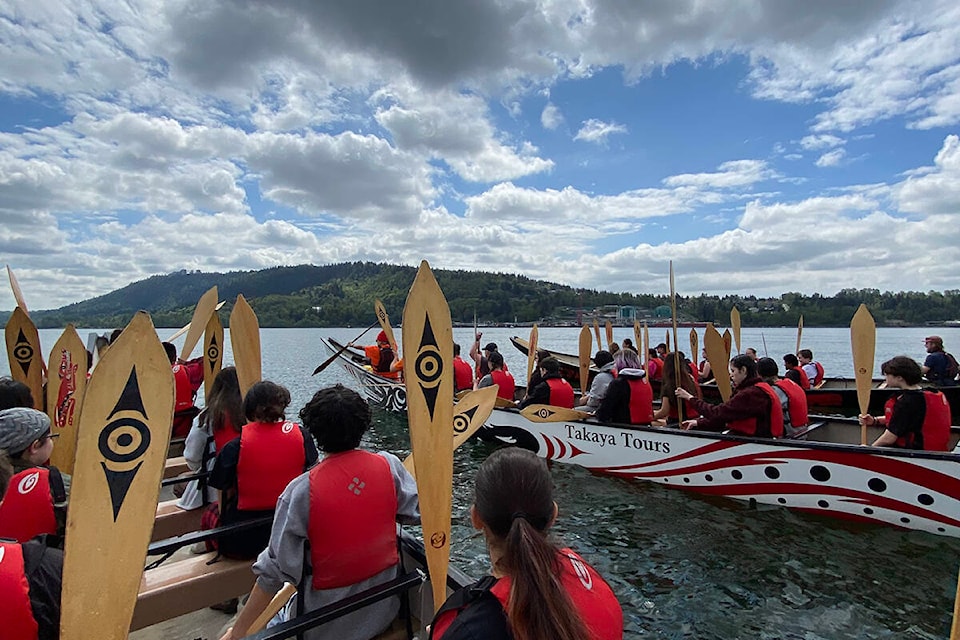A Surrey-based school program aimed at helping Indigenous students feel more connected to education has wrapped up its first proper year since the onset of the pandemic.
“I started in March 2020, so I came in the office for five days and then everyone went home,” recalled Justin Boehringer, who runs the program, called Windspeaker, in the Surrey school district.
“This school year of September 2022 until now was the first year I’ve really been able to personally run the program as I’ve wanted it, with actual monthly trips where we gather in-person.”
Windspeaker, which has been offered through the Surrey school district for more than 10 years, is for high school students who identify as Indigenous. They are able to meet once a month and learn about their own and others’ Indigenous cultures and histories while building relationships with their peers and Indigenous staff.
The three pillars for the program are Indigenous leadership, culture and outdoor education.
During the pandemic, outdoor learning was impacted most when classes moved to virtual gatherings for safety, but the return to in-person has been “powerful because Indigenous education has such a powerful relationship with the land that actually being out there outside of the four walls of a classroom, it opens up learning possibilities,” Boehringer said.
Next year’s program will be expanding thanks to additional funding, allowing the program to benefit students in Grades 6 and 7, where so far it has only been available to high school students.
This is important in an attempt to be more proactive rather than reactive, especially since one aim of the program is to raise graduation rates for Indigenous students who are completing high school at a lower rate in Surrey than the B.C. average, according to the district’s data.
READ MORE:Low grad rates for Surrey’s Indigenous students point to failures of government systems: educators
“When we’re trying to get students back into school who, maybe they’re in Grade 10 and they’ve been out of school for two or three months, it’s almost too late at that point but if you’re able to get there early… hopefully by Grade 10 or 11, there’s less of a chance of them missing school,” Boehringer explained.
“Indigenous students from elementary school… they get lost in the system, so gathering them together and allowing them to make those friendships even before high school is something I’m really excited about.”
Boehringer adds that in Surrey and other urban centres of B.C., Indigenous people can feel marginalized in a “typical school setting” which he sees affecting some students’ sense of identity.
“They’re maybe unsure of their own confidence of being an Indigenous person, so when you’re in a place with students who all feel the same way, you get a lot more comfortable to open up and take risks and try things and know that you won’t be judged by your peers.”
There are many students who miss many regular school days but will never miss a day of the program, which has encouraged some to get back into a routine of attending regular school days as well, Boehringer notes.
“I’m an Indigenous person and I grew up in an urban setting just as they are, I’ve struggled with the same things that they’re struggling with.”
@SobiaMoman
sobia.moman@peacearchnews.com
Like us on Facebook and follow us on Twitter.
